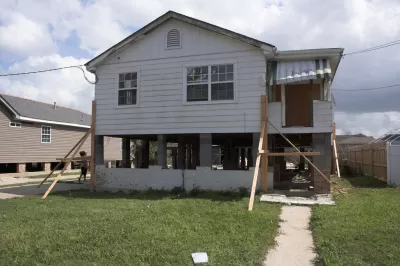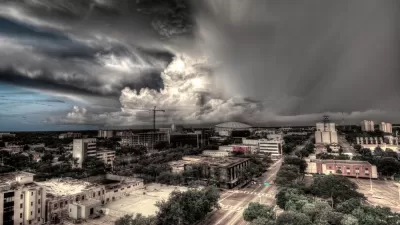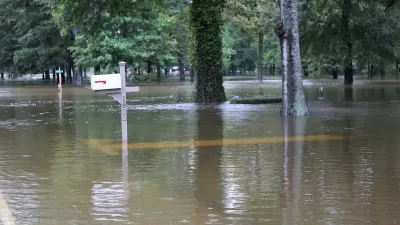After a series of hurricanes, experts discuss how guide people out of the way of the most deadly floods and storms.

"As seas rise, flooding is becoming almost a weekly occurrence in cities up and down the East Coast. As storms grow stronger, so are the calls to walk away from the most flood-prone places," Miyuki Hino, Katharine J. Mach, and Christopher B. Field write in Vox.
The problem is not that there aren't good reasons to move. "We found that moving to safer ground can be an attractive option for many reasons: It protects livelihoods, restores coastal ecosystems, and reduces damages from extreme weather," they write. But existing incentives can push people to stay.
Property taxes support localities, motivating mayors to keep populations in place or grow them. In states like Florida and Texas, which lack a state income tax, this incentive gets even stronger.
Monetary concerns can contribute to states decisions to let developers build freely. Meanwhile, when these places flood, relief efforts call heavily on federal money. "Florida alone is home to 1,601 'severe repetitive loss properties' — properties that, on average, flood every two to three years and have been rebuilt five times with the help of taxpayer money. Harris County, Texas, which includes Houston, has close to 2,000 such properties."
FULL STORY: Abandon Florida? Not quite. But it’s time for a retreat from flood zones.

Planetizen Federal Action Tracker
A weekly monitor of how Trump’s orders and actions are impacting planners and planning in America.

Maui's Vacation Rental Debate Turns Ugly
Verbal attacks, misinformation campaigns and fistfights plague a high-stakes debate to convert thousands of vacation rentals into long-term housing.

San Francisco Suspends Traffic Calming Amidst Record Deaths
Citing “a challenging fiscal landscape,” the city will cease the program on the heels of 42 traffic deaths, including 24 pedestrians.

Amtrak Rolls Out New Orleans to Alabama “Mardi Gras” Train
The new service will operate morning and evening departures between Mobile and New Orleans.

The Subversive Car-Free Guide to Trump's Great American Road Trip
Car-free ways to access Chicagoland’s best tourist attractions.

San Antonio and Austin are Fusing Into one Massive Megaregion
The region spanning the two central Texas cities is growing fast, posing challenges for local infrastructure and water supplies.
Urban Design for Planners 1: Software Tools
This six-course series explores essential urban design concepts using open source software and equips planners with the tools they need to participate fully in the urban design process.
Planning for Universal Design
Learn the tools for implementing Universal Design in planning regulations.
Heyer Gruel & Associates PA
JM Goldson LLC
Custer County Colorado
City of Camden Redevelopment Agency
City of Astoria
Transportation Research & Education Center (TREC) at Portland State University
Jefferson Parish Government
Camden Redevelopment Agency
City of Claremont





























